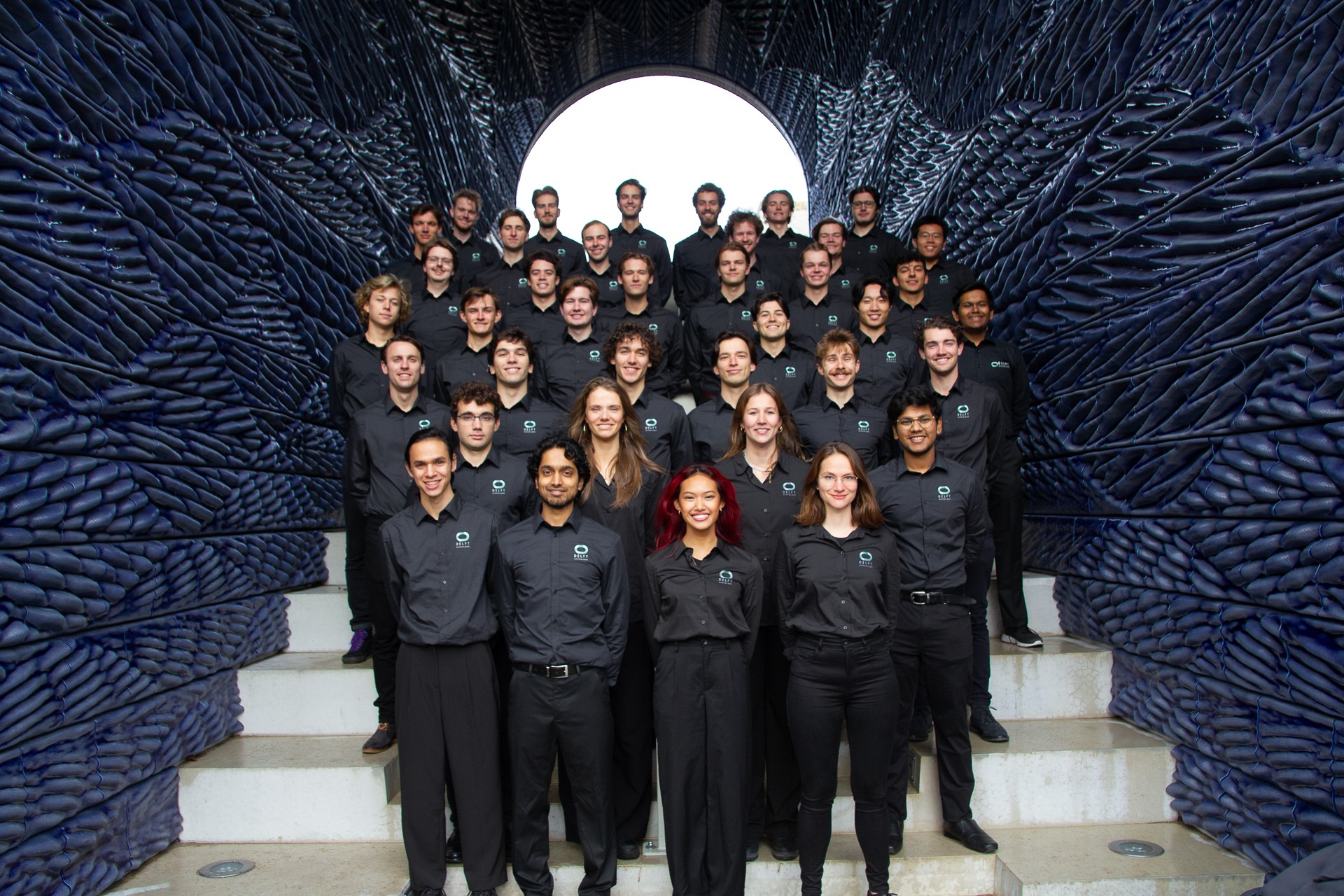The 39 Delft Hyperloop team students presented their design last Tuesday. A novelty in this year’s competition is that the pod has to be able to switch lanes without touching anything.
The Delft Hyperloop VIII team. (Photo: Delft Hyperloop team)


A 40 metre Hyperloop test track will be constructed alongside the Dream Hall. It is a long, cage-shaped structure with a fork in the middle. The Hyperloop pod, which is the size of a washing machine, will either go straight on or turn off here. But unlike trams or trains, the Hyperloop pod will have to do this without having any contact with the track. The Delft Hyperloop team expects to run the first tests as of mid-April.
When it started about 10 years ago, the Hyperloop competition was all about speed. After all, Elon Musk’s vision was that pods would zip through vacuum tubes at speeds of around 1,000 kilometres per hour, making air travel obsolete. Four European universities decided to take a different path, focusing on practical technologies rather than speed. They are ETH Zurich, the Polytechnic University of Valencia (UPV), the University of Edinburgh, and TU Delft. They are now jointly organising the European Hyperloop Week (EHW) for the third time. The aim of the EHWs is to test the new technologies. This year’s EHW will take place in Zurich from 15 to 21 July.
Kosma Krzyzanowski, the Delft Hyperloop team’s Chief Engineer, says: “The European university teams concentrate on developing scalable techniques.” The Hyperloop VI teams designed hybrid electromagnetic suspension which combines strong permanent magnets and actuated electromagnets. It keeps the capsule within a few millimetres of the track. The next generation of students designed internally controlled and powered suspension and propulsion. This meant that a passive steel H-beam could be used as the track. Hyperloop VIII will now switch lanes for the first time.




To switch lanes to the right, the magnet on the right will apply more force to the side rail to pull the capsule to the right and compensate for the centrifugal force to the left. To then go straight, the left magnet will exert a slightly stronger pull on the pod. This has to be done very delicately as there is only five millimetres of space between the magnets and the side rails.
During testing, the Hyperloop is fitted with safety wheels. It is like a toddler’s bike with training wheels. The safety wheels will not turn once everything is balanced. The Hyperloop test track next to the Dream Hall will be open to the public from mid-April.
- Read all about the European Hyperloop Week here
Do you have a question or comment about this article?
j.w.wassink@tudelft.nl


Comments are closed.